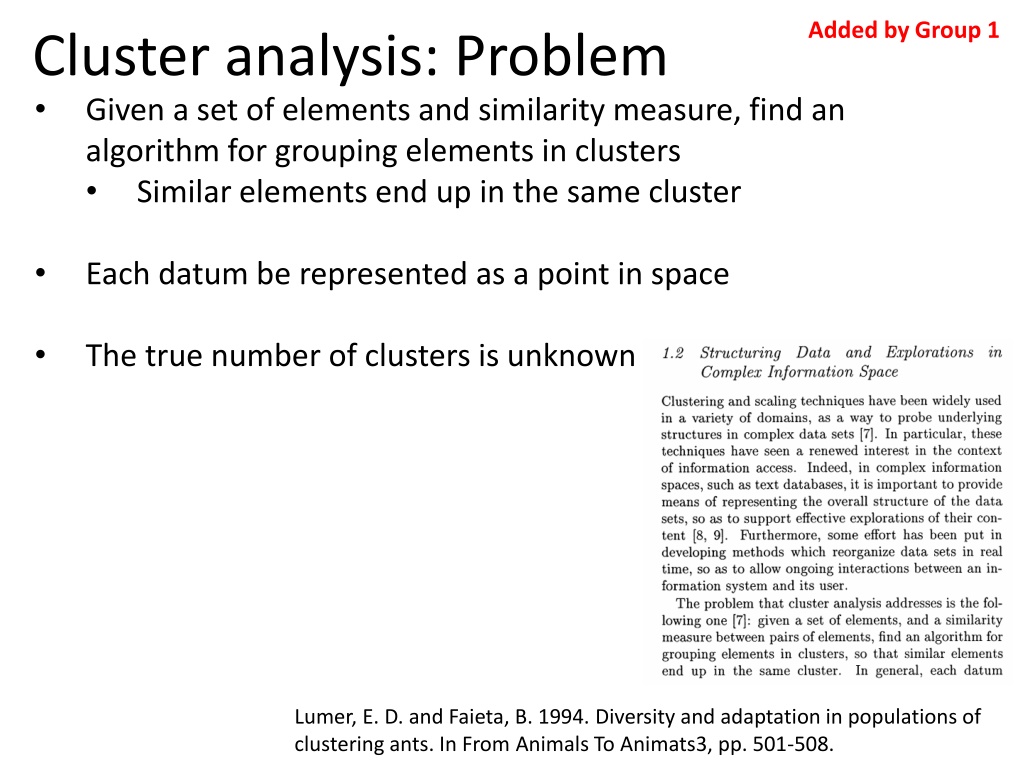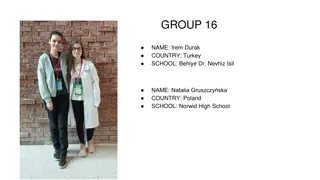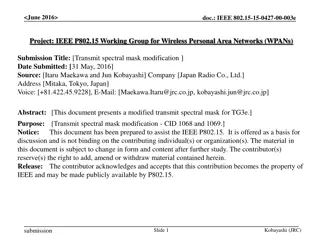Cluster Analysis: Grouping Elements into Clusters with Similarity Measures
Given a set of elements and a similarity measure, the algorithm aims to group elements into clusters where similar elements are grouped together. Each element is represented as a point in space, and the true number of clusters is unknown. The clustering algorithm is inspired by the behavior of ants in adapting to their environment and context-dependent interactions. Ants perform a random walk on a 2D grid, collecting dead ants and grooming themselves, effectively forming clusters based on local interactions. This concept extends to data points, where similar elements are collected together in a process akin to grooming a data set.
Download Presentation

Please find below an Image/Link to download the presentation.
The content on the website is provided AS IS for your information and personal use only. It may not be sold, licensed, or shared on other websites without obtaining consent from the author. Download presentation by click this link. If you encounter any issues during the download, it is possible that the publisher has removed the file from their server.
E N D
Presentation Transcript
Added by Group 1 Cluster analysis: Problem Given a set of elements and similarity measure, find an algorithm for grouping elements in clusters Similar elements end up in the same cluster Each datum be represented as a point in space The true number of clusters is unknown Lumer, E. D. and Faieta, B. 1994. Diversity and adaptation in populations of clustering ants. In From Animals To Animats3, pp. 501-508.
Added by Group 1 Ant (agent) Behave in a context-dependent manner Only perceive their surrounding local environment (no communication) Lumer, E. D. and Faieta, B. 1994. Diversity and adaptation in populations of clustering ants. In From Animals To Animats3, pp. 501-508.
Added by Group 1 Ants and Environment: Model Ants perform a random walk on a 2d-grid Elements (Dead ants in Q2 grooming / animals in Q3 clustering) are randomly laid out on the grid A site in the grid is occupied by at most one elements Lumer, E. D. and Faieta, B. 1994. Diversity and adaptation in populations of clustering ants. In From Animals To Animats3, pp. 501-508.
Grooming an ant colony Result = dead ants collected in one or a few places. Collecting dead ants together - If you are not already carrying a dead ant, and you bump into one, pick it up if you see few other dead ants in that area. Dead ant that needs to be segregated If you are carrying a dead ant, drop it if you see many other dead ants in that area. Live ant that wanders and segregates dead ants
From dead ants to data points Collecting grains of similar size together Grains Data points 1 2 Size 4 Grains with two properties: (size, weight) Data points with 2 dimensions 7 10 4 1 2 8
Grooming a data set In case of ants, you simply count the number of dead ants, as they all have a single common property they are all dead. Collecting similar data points together - If you are not already carrying a data point, and if bump into one, pick it up if you see few other similar data points in that area. In case of grains, you calculate the similarity between the grain you want to pick up or drop and of those in that area. If you are carrying a data point, drop it if you see many other similar data points in that area. You differentiate between the two viewpoints via the function f. In the former, f is just the perceived fraction of dead ants, and in the latter it is a similarity between the grains.
Added by Group 1 Clustering a data set In case of animals, you calculate the similarity between the animal you want to pick up or drop and of those in that area. You differentiate between the two viewpoints via the function f. In the former, f is just the perceived fraction of dead ants, and in the latter it is a similarity between the grains. From dataset.py
Distance between a pair of data points Data Vector Xi Xi,1 Xi,2 Xi,3 Xi,n n ( ) 2 D(xi,xj)= xi,k- xj,k Data Vector Xj k=1 Xj,1 Xj,2 Xj,3 Xj,n
2 3 (4- 2)2= 2 D(4,2)= (4- 3)2=1 D(4,3)= 4 (4- 5)2=1 D(4,5)= 5 [2,1] (4- 2)2+ (1-1)2= 2 D([4,1],[2,1])= (4- 3)2+ (1- 6)2= 5.1 D([4,1],[3,6])= [4,1] [3,6] (4- 5)2+ (1- 4)2= 3.16 D([4,1],[5,4])= [5,4] See Similarity.py
Similarity between a data point and its neighborhood ( ) 1-D xi,xj 1 s2 if f > 0 f xi ( )= (5. 13) a xj Neigbhs s(xi) 0 otherwise where, f xi ( ): Similarity function (ranges between 0 and 1) Neigbhs s(xi): Neighborhood square of xi D xi,xj ( a : Scale of dissimilarity or discrimination factor : Sum over terms within ( ), where each term corresponds to the similarity between xi and a neighbor xj ): Euclidean distance between xi and xj See Similarity.py
Example: f(xi) for a single data item (4- 2)2+ (1-1)2= 2 D([4,1],[2,1])= (4- 3)2+ (1- 6)2= 5.1 D([4,1],[3,6])= (4- 5)2+ (1- 4)2= 3.16 D([4,1],[5,4])= [2,1] [4,1] [3,6] [5,4] See Similarity.py
Picking-up and Dropping pp(xi): probability that xi will be picked pd(xi): probability that xi will be dropped k1,k2: threshold constants (> 0 for simplicity) 2 k1 pp(xi)= (5. 11) k1+ f (xi) 2 k1 pp ranges between and 1 k1+1 2 f (xi) k2+ f (xi) (5. 12) 2 pd(xi)= 1 pd ranges between 0 and k2+1 f << k1 pp 1 f >> k1 pp 0 f << k2 pd 0 f >> k2 pd 1
Choosing parameter values determines the threshold value of D(xi, xj) beyond which similarity between xi and xj is 0. k1 determines the minimum value of pp 0. k2 determines the maximum value of pd 1. (See p.233 and p.259 of your textbook for some example values)
Ant Clustering Algorithm Create a R x C grid Strew your data points across the grid Randomly place N ants in the grid, with no more than one ant occupying a cell Do the following for a given maximum number of iterations: For every ant in the grid, in their respective cells: If ant is not carrying a data point and its cell contains one, xi, then Compute f(xi) Pick up item with probability Pp(xi) If ant is carrying a data point xi and its cell is free, then Compute f(xi) Drop item with probability Pd(xi) Walk ant to a random neighboring cell that is not occupied by another ant























